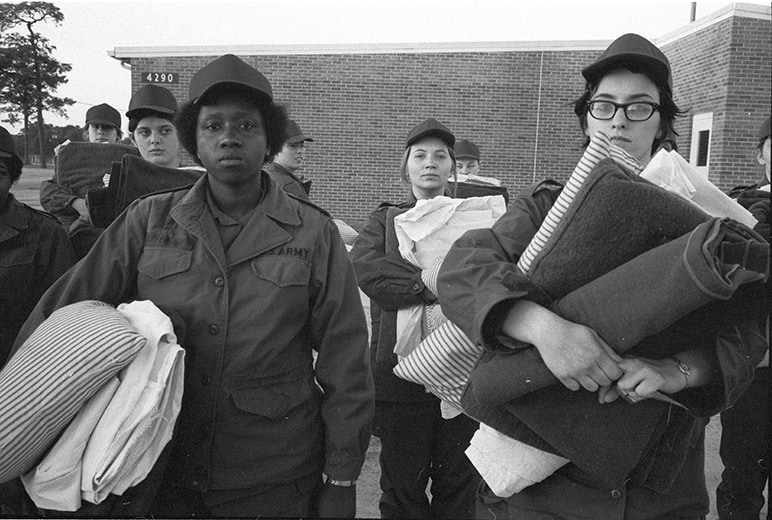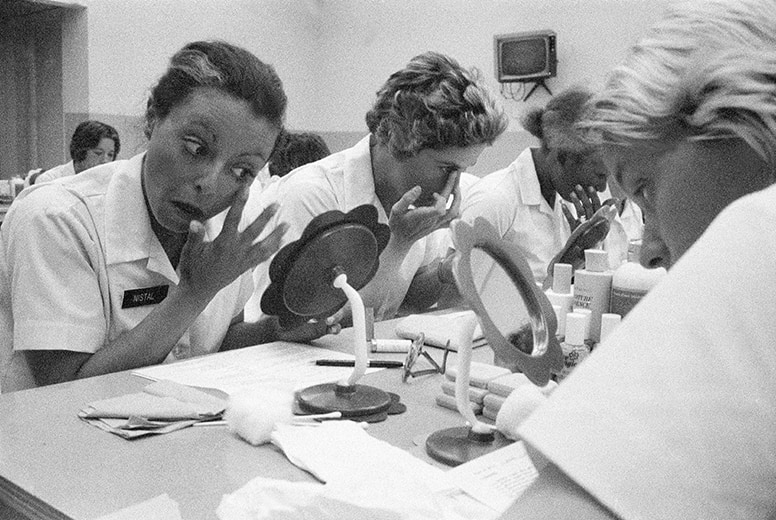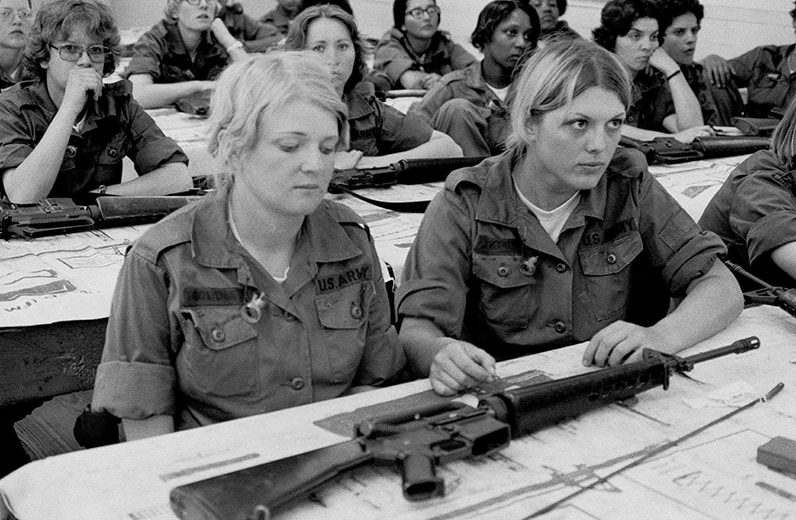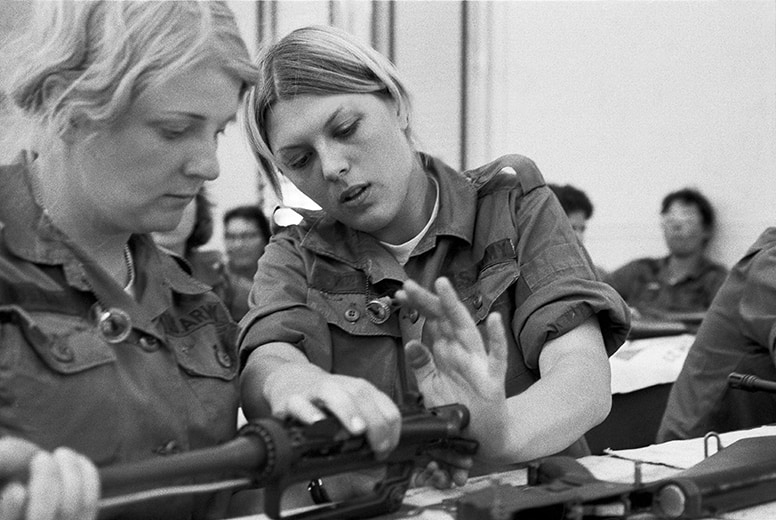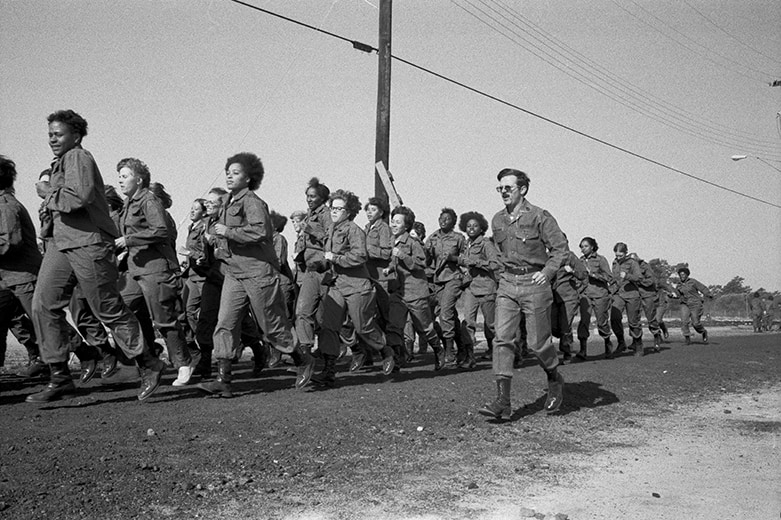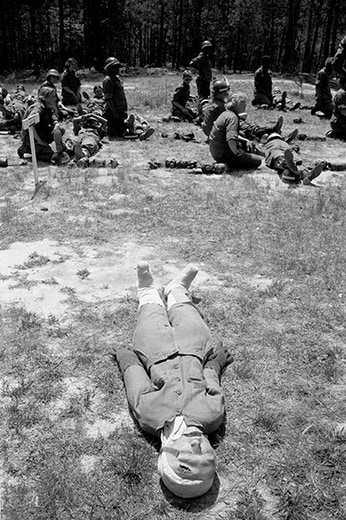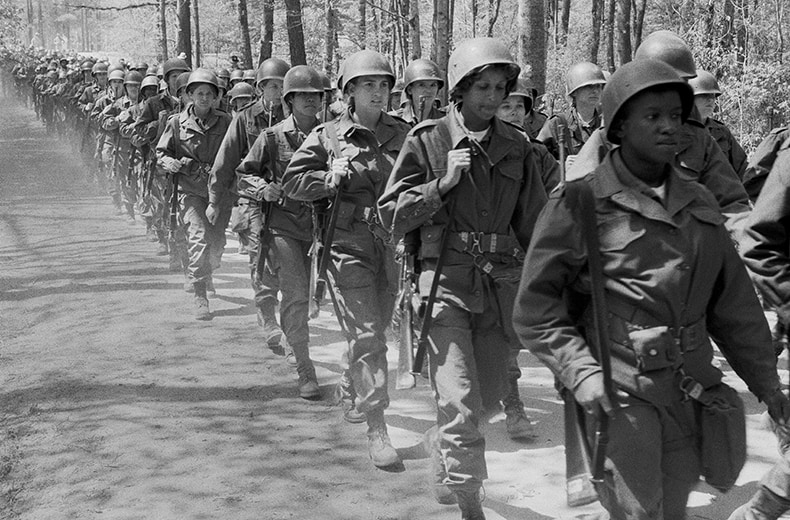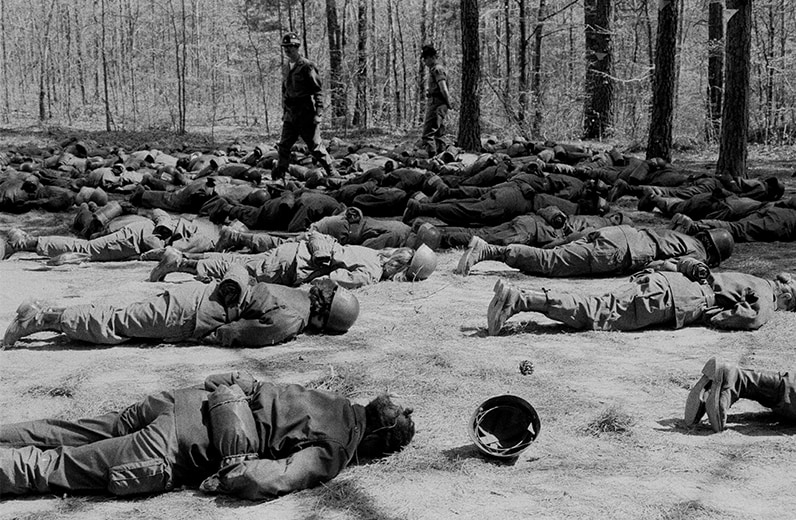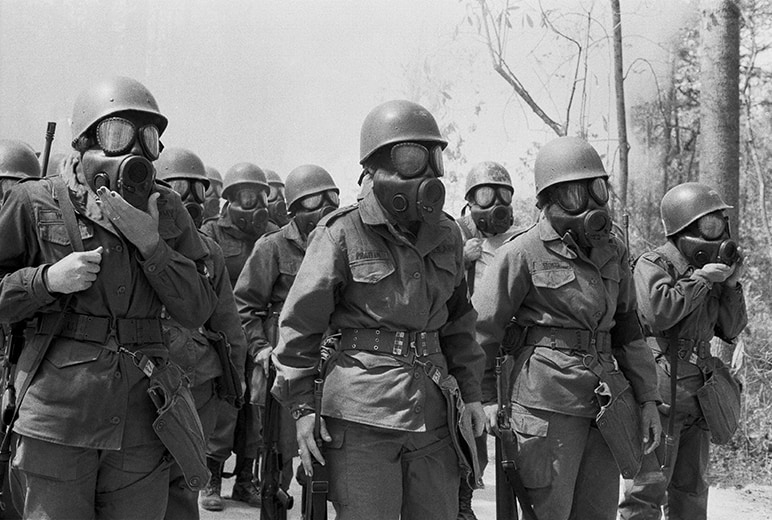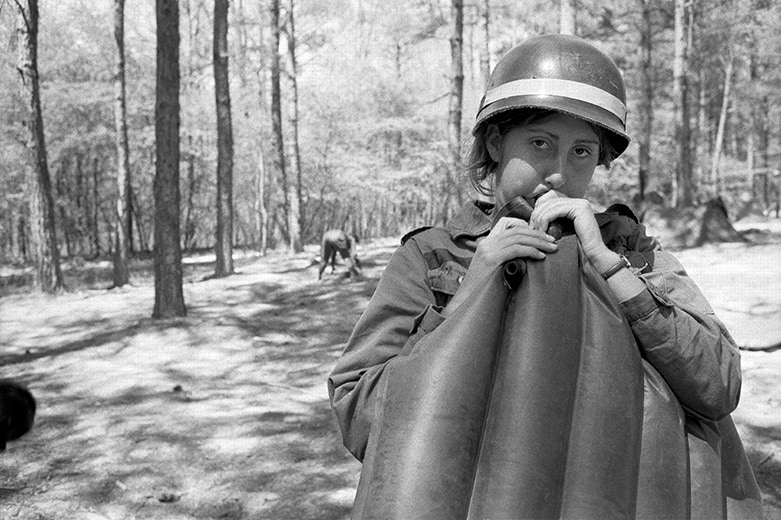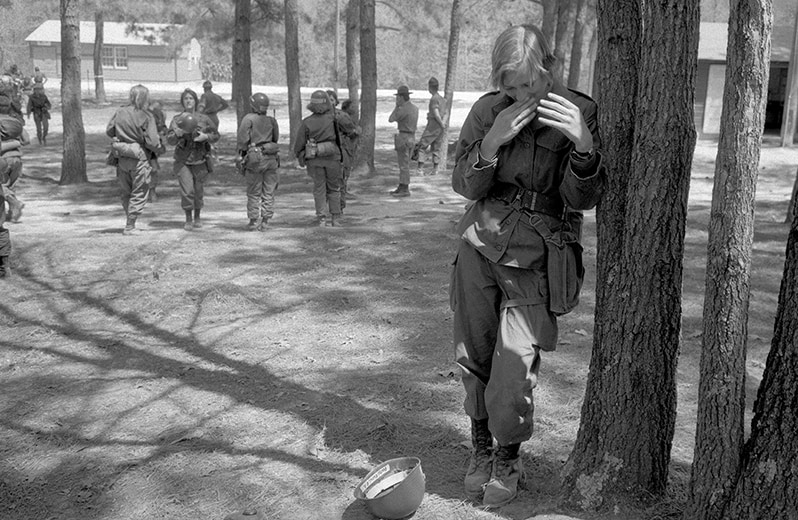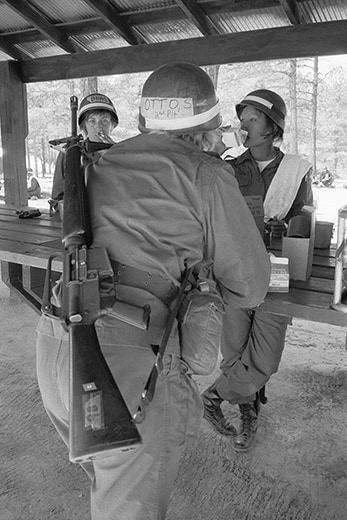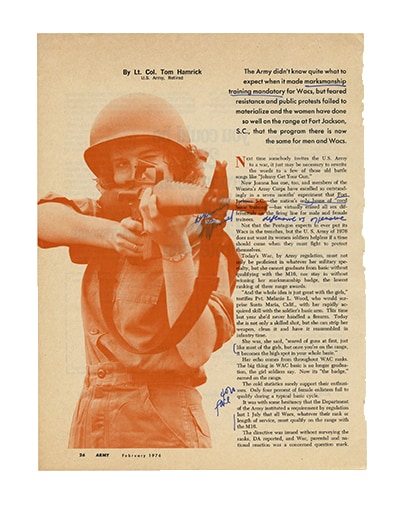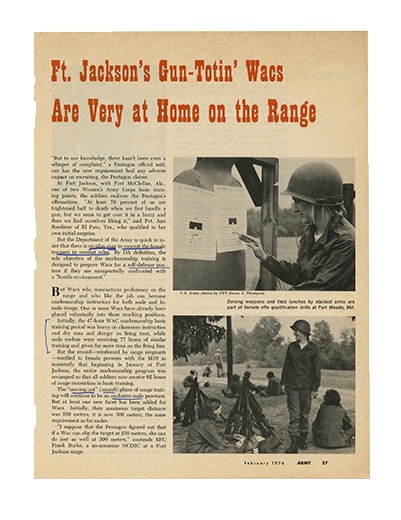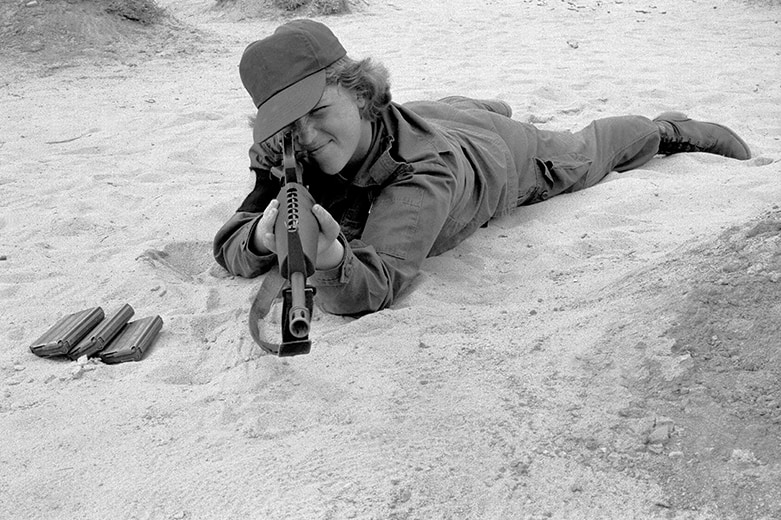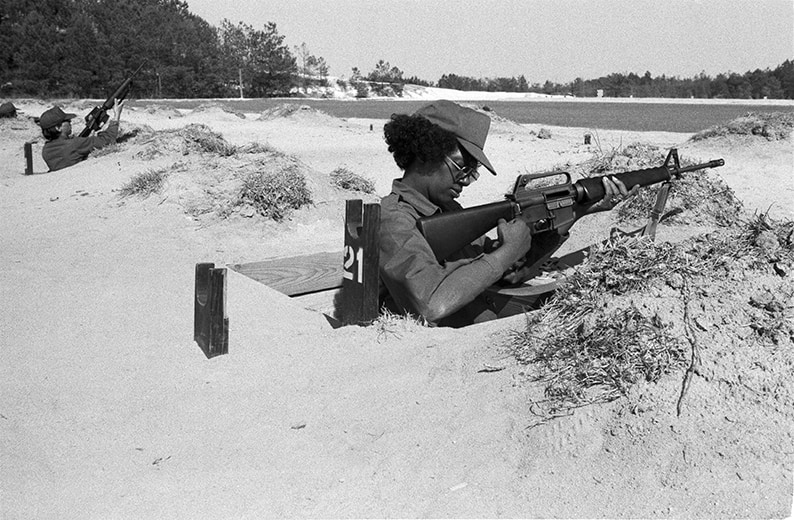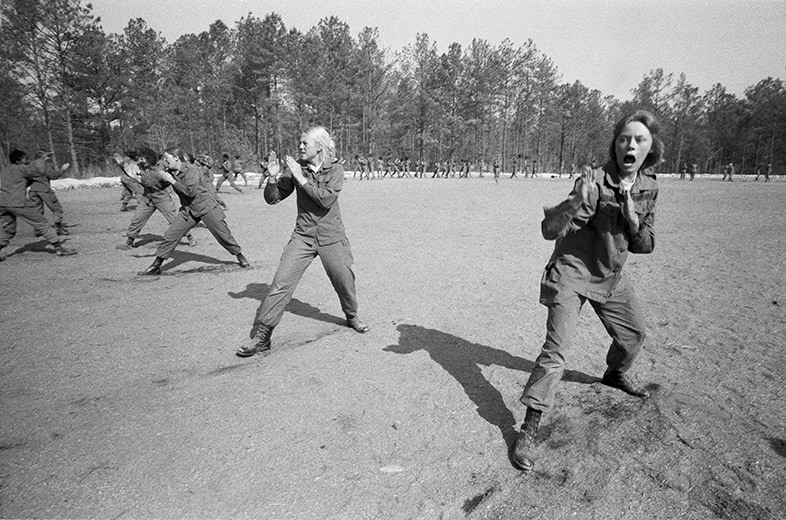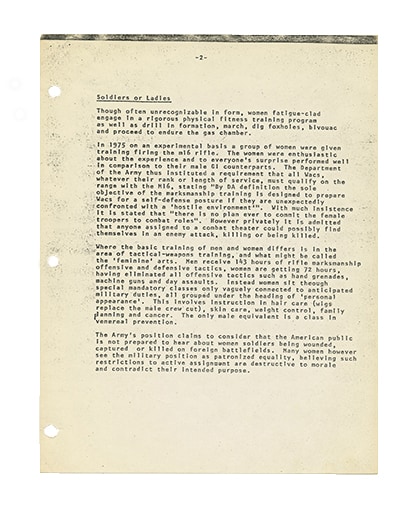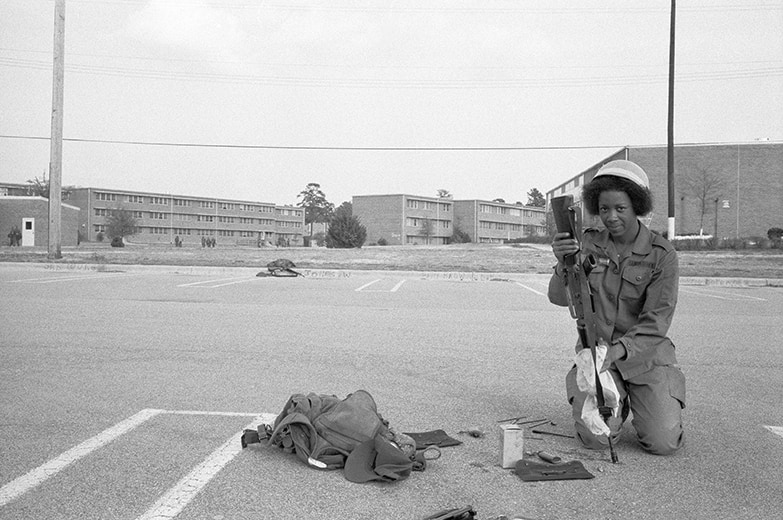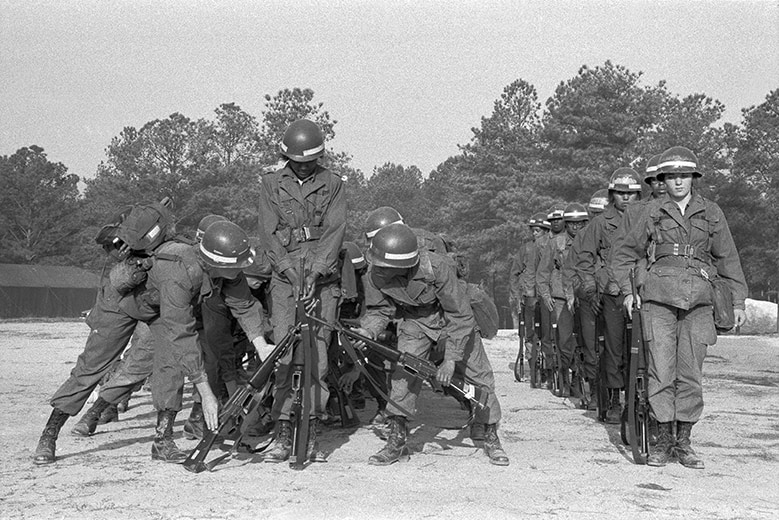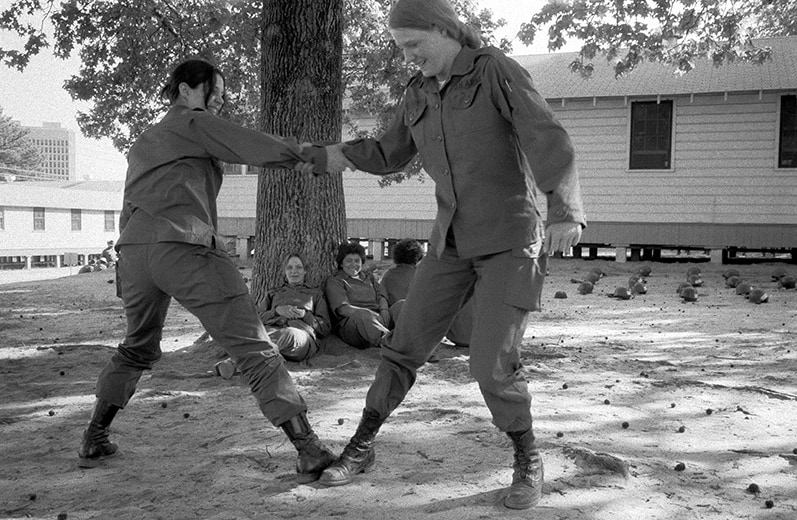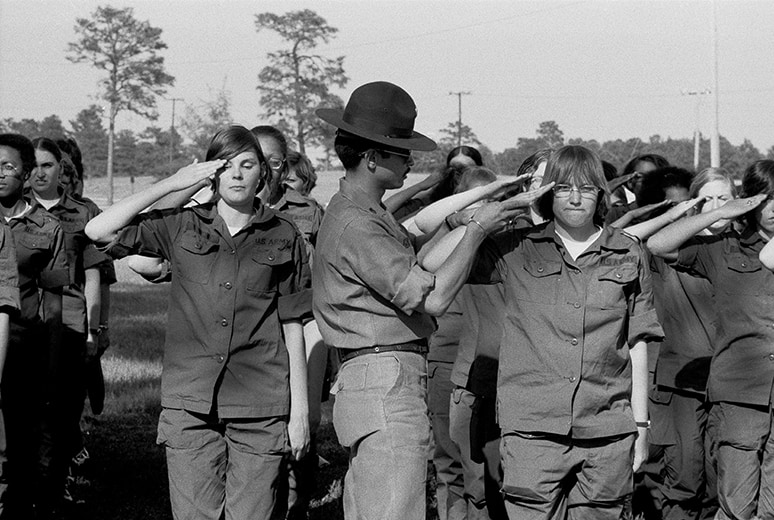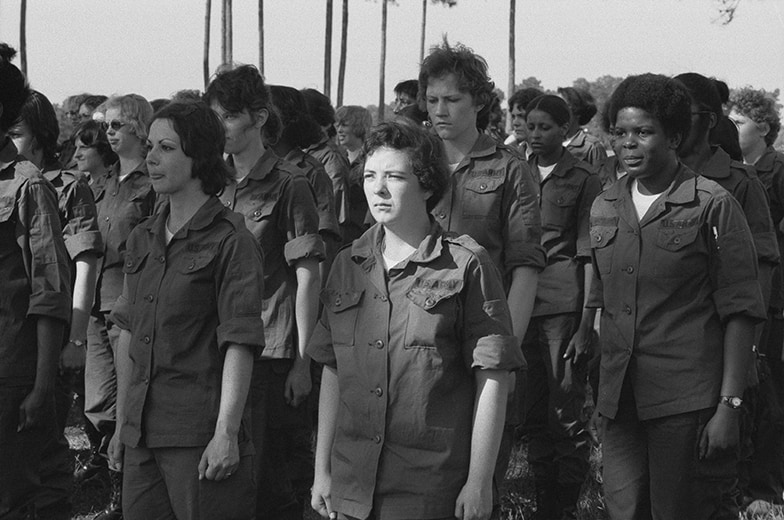Women in the US Army (1975-1976)
The following pictures were taken at Fort Jackson in South Carolina, one of the United States Army's two basic training centers for women in the spring of 1976.
Newly inducted women pass through a six week basic training course prior to placement in specialized fields and finally army units. "Bootcamp" is their first experience with Army life.
Although women have been in the US Army since 1942, recent changes in manpower requirements have profoundly altered their role. In 1972 before 'all-volunteer' began, the number of women in the Army was 13,300. In mid-1975 it was approximately 40,500 and it's expected to now be approaching 50,000, bringing their total participation to 7% (A 305% increase in 3 years). Whereas traditionally women have only served in four special areas: medical, administration, communications and supply; 'traditional' male jobs such as tank and helicopter mechanics, jeep, truch and forklift drivers, electronics, intelligence, telephone linemen and dog handlers have now opened up in response to both internal and external pressures. Equal preparation to pass necessary tests. Two-thirds of the military women are still concentrated in previously designated fields.
- Susan Meiselas, Distribution Text for Women in the US Army, 1978
Why do women need the military?
Recruiters state "It's what we can give you -- rather than what you give us." Ads encourage "A new life and a new world of travel" where "You can find yourself."
BJ Phillips in MS Magazine described the typcial WAC she met
"She had been out of high school for a year, and in a recession economy, found jobs non-existent or dull or low-paid. Unable for financial reasons, to go on to college or into some type of vocational training program, she chose the army because it offered her both job training and GI Bill benefits for further education after she leaves."
-From Field Notes of "Women in the US Army, Susan Meiselas 1975
The desire for education, travel and training and the lack of options elswhere are the most apparent motivations much the same for men and women today. The military package deal also relieves the anxiety and ambiguity of personal life choices by offering an authoritarian structure protective with promise, at least in time of peace. Brigadier General Mildred C. Bailey commented,
"The Army's mission is national defense, not to create job oppurtunities or help people out in civilian life."
- Field Notes from Women in the US Army, Susan Meiselas, 1975
